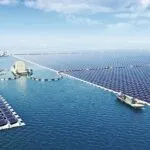If you already use solar energy, you probably enjoy lower energy bills and feel good about helping the environment. But did you know you can store the solar energy your panels produce for use later? Building your own solar energy storage system is not only doable but can also save you money and give you greater independence. Let’s dive deeper into how to create your own DIY solar energy storage setup at home, step-by-step.
Solar energy storage involves saving the extra electricity produced by your solar panels during the day so you can use it at night, during cloudy days, or when your electricity demand is higher than your current solar production. By storing energy, you’re less reliant on the electrical grid and have backup power during outages or emergencies, making your home more resilient and energy-efficient.

Why Should I Build My Solar Energy Storage Myself?
Doing it yourself has several benefits:
- Saves Money: Commercial solar storage systems can be expensive. DIY solar energy storage systems are often significantly cheaper.
- Customizable: You can build the system tailored to your household’s energy consumption patterns.
- Learn New Skills: DIY projects provide hands-on experience in renewable energy, electrical systems, and problem-solving.
- Energy Independence: You can become more self-sufficient and reduce your reliance on utility companies, giving you greater control over your energy use.
- Emergency Preparedness: Be prepared for unexpected power outages or grid failures by storing energy at home.
Essential Parts of a DIY Solar Energy Storage System
To successfully build your solar storage system, you’ll need to understand the components:
Solar Batteries
Batteries store the energy your solar panels produce. The main types are:
- Lead-Acid Batteries: These are budget-friendly but need regular maintenance and typically have a shorter lifespan.
- Lithium-Ion Batteries: Initially more expensive, lithium-ion batteries last longer, require minimal maintenance, and deliver better overall performance.
When choosing batteries, consider your budget, desired lifespan, storage capacity, and maintenance requirements.
Charge Controller
This device controls the energy flow between your solar panels and batteries, making sure the batteries don’t get overcharged. There are two types:
- PWM Controllers: Budget-friendly but less efficient, suitable for smaller, less demanding systems.
- MPPT Controllers: More expensive upfront, but offer higher efficiency, extracting more power from your solar panels.

Power Inverter
The inverter converts direct current (DC) stored in your batteries to alternating current (AC), which powers your home’s appliances. Choosing the right inverter is crucial for safe and efficient operation.

Planning Your DIY Solar Energy Storage System
Good planning helps your project go smoothly:
- Calculate Energy Needs: Calculate how much electricity your home uses each day to determine the size of your battery system.
- Choose a Location: Find a dry, well-ventilated place that’s not too hot or cold, protecting your batteries and equipment.
- Select Quality Components: Choose reliable products that suit your budget and energy needs.
Building Your Solar Storage System
While the steps will vary, we’ve explained the general process below.
- Step 1: Set Up Batteries. Depending on your required voltage and storage capacity, connect your batteries in series or parallel configurations. Ensure connections are clean and secure to avoid energy losses.
- Step 2: Install the Charge Controller. Position the charge controller between your solar panels and batteries. Ensure that all wires are securely connected and safely insulated.
- Step 3: Connect the Inverter. Attach your inverter to the battery system. Ensure all wiring is secure, insulated, and arranged neatly to prevent accidents.
- Step 4: Connect Solar Panels. Attach cables from your solar panels to the charge controller, ensuring everything is done safely and according to manufacturer guidelines.
Safety Tips
When working with electrical systems, safety is always paramount:
- Use insulated tools to protect against electrical shocks.
- Clearly label all wires and components for easy identification.
- Regularly inspect your setup for loose wires, corrosion, or other hazards.
- Consult a professional electrician if you’re unsure about any step in the installation process.
Maintaining Your System
Regular maintenance helps your system perform at its best:
- Regularly check battery voltage levels and inspect for signs of corrosion or damage.
- Clean your solar panels and storage equipment to ensure maximum efficiency.
- Utilize battery monitoring systems or mobile apps to keep track of your system’s performance.
Common Issues and Fixes
Knowing common problems can help you solve issues quickly:
- Battery Charging Issues: Check for loose wiring, battery damage, or incorrect controller settings.
- Inverter Malfunctions: Overheating or poor installation are common causes. Ensure good ventilation and check installation integrity.
- Low System Efficiency: This is often caused by dirty solar panels or incorrect battery configurations. Routine cleaning and periodic checks prevent these issues.
- Battery Degradation: Batteries can lose capacity over time due to improper charging or frequent deep discharges. Check battery health regularly and avoid deep discharging frequently.
- Corrosion on Battery Terminals: Corrosion can reduce your system’s efficiency. Regularly inspect battery terminals and clean off corrosion using baking soda mixed with water.
- Wiring Issues: Loose or damaged wires can lead to system inefficiency or safety hazards. Regularly inspect wiring for signs of wear or damage and replace as necessary.
- Charge Controller Errors: Incorrect settings or malfunctions can cause battery overcharging or undercharging. Regularly verify charge controller settings and performance.
- Solar Panel Damage: Physical damage or deterioration of panels can reduce energy production. Inspect panels regularly for cracks, dirt, or shading and address issues promptly.
- Fuse or Breaker Problems: Blown fuses or tripped circuit breakers can interrupt power flow. Check and replace blown fuses regularly or reset breakers as needed.

Upgrading Your DIY Solar Energy Storage
Your first DIY solar energy storage setup isn’t your last. You can quickly expand it:
As your energy needs grow, you can easily upgrade your solar storage setup:
- Increase Battery Storage: Add more batteries to extend your storage capacity.
- Upgrade Components: Replace older equipment with more efficient controllers or inverters.
- Incorporate Smart Devices: Add innovative technology to automate energy management, track usage, and optimize storage.
Is DIY Solar Storage Right for You?
A DIY solar storage project could be perfect if you’re comfortable with basic electrical work, enjoy learning new things, and want to become more environmentally friendly. Be realistic about your skills and always ask for help when needed.
Building your DIY solar energy storage system is practical, saves money, and helps the environment. With careful planning, quality equipment, and safety in mind, you can create a system that perfectly meets your home’s needs.





